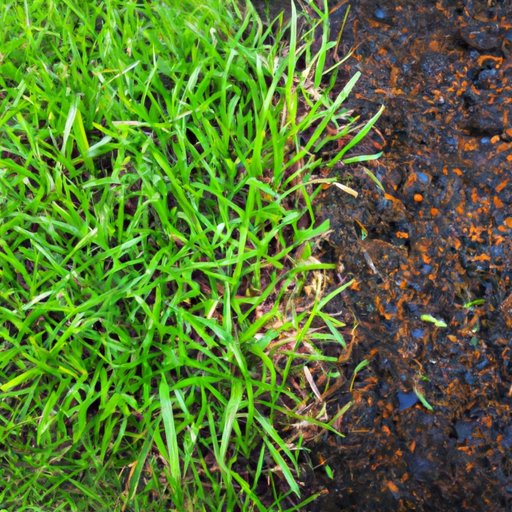Introduction
Planting grass is an exciting and rewarding experience that can transform your outdoor space into a lush, vibrant oasis. Knowing when to plant grass, however, can be tricky. Depending on your location and climate, you may have different options for when to plant grass, and each season has its own unique benefits. In this article, we’ll explore the optimal times to plant grass, analyze the impact of temperature, evaluate ideal soil conditions, and compare regional differences in planting times.

Analyzing the Different Seasons for Planting Grass
Before planting grass, it’s important to understand how temperature and soil conditions can influence the success of your project. Generally, temperatures between 65 and 80 degrees Fahrenheit are ideal for planting grass seed. If the temperature drops below 60 degrees, the seed won’t germinate as quickly, and if it goes above 90 degrees, the seed may die. The soil should also be moist but not soggy, as overly wet soil can lead to fungal growth or rot.
When it comes to planting grass, there are two main seasons to consider: spring and fall. Planting in spring offers the advantage of warmer soil, which helps the grass to germinate faster. On the other hand, fall planting gives the grass more time to establish itself before winter arrives. It’s also important to note that some types of grass do better if planted in the spring, while others do better in the fall. For example, cool-season grasses like Kentucky bluegrass and perennial ryegrass tend to do better when planted in the fall, while warm-season grasses like Bermudagrass and St. Augustinegrass thrive when planted in the spring.

Investigating the Benefits of Planting Grass at Different Times of Year
In addition to spring and fall, there are a few other times of year when you might consider planting grass. Early summer is a great time for planting cool-season grasses, as the soil is still warm enough to encourage germination. Late summer is also a good option for planting cool-season grasses, as it gives the grass plenty of time to become established before the cold weather arrives. Finally, early fall is a great time for planting warm-season grasses, as the soil is still warm enough to promote root growth and establishment.
Comparing Regional Differences in When to Plant Grass
In addition to considering temperature and soil conditions, it’s important to take regional differences into account when deciding when to plant grass. For example, cooler climates with long winters may require earlier planting times, while warmer climates with mild winters may allow for later planting times. Additionally, different soil types may require different planting times. Sandy soils, for example, may require earlier planting times due to their tendency to dry out quickly, while clay soils may require later planting times due to their tendency to retain moisture.
Conclusion
In conclusion, understanding when to plant grass can be a tricky endeavor. Temperature, soil conditions, and regional differences all play a role in determining the best time to plant. Generally, spring is the best time to plant warm-season grasses, while fall is the best time to plant cool-season grasses. Additionally, early summer and late summer can both be good times for planting cool-season grasses, and early fall can be a great time for planting warm-season grasses. Finally, it’s important to take regional differences into account, as different climates and soil types may require different planting times.
Ultimately, the key to successful grass planting is to carefully consider your climate, soil type, and regional differences before making a decision. With the right timing, you can ensure that your grass will be lush and healthy for years to come.
Summary of Key Points
• Spring is the best time to plant warm-season grasses, while fall is the best time to plant cool-season grasses.
• Early summer and late summer can both be good times for planting cool-season grasses, and early fall can be a great time for planting warm-season grasses.
• Regional differences should be taken into account, as different climates and soil types may require different planting times.
Recommendations for Planting Grass
• Consider your local climate and soil type before deciding when to plant.
• Aim for temperatures between 65 and 80 degrees Fahrenheit for optimal germination.
• Make sure the soil is moist but not soggy.


